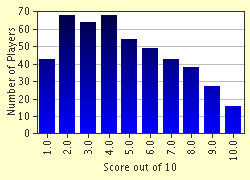Quiz Answer Key and Fun Facts
1. One of the great female villains in Irish history, this queen was always determined to get what she wanted, even if that meant bringing her kingdom into battle against Ulster's legendary warrior, Cu Chulainn. The war was all for the sake of a brown bull!
2. Known as the "Pirate Queen", this sixteenth-century clan leader not only captained her own ships and carried out raids on English fleets which dared to sail to her territory, but she also visited the court of Elizabeth the First and managed to secure property and lordship rights from the queen.
3. Ireland's first convicted witch, this Kilkenny woman was accused of witchcraft in 1324, but managed to escape to England and thus avoid her death sentence.
4. The daughter of Irish emigrants to France, this girl found fame first as a model for the painter Boucher, but became famous in a rather more spectacular way when she became a mistress of Louis XV.
5. This Dublin girl is best remembered as the beloved of the leader of the 1803 Rebellion, Robert Emmet. His determination to see her following the failure of his rebellion resulted in his arrest and subsequent execution.
6. Born in 1767, this daughter of an Anglo-Irish landowner was a collaborator with her father on a modern guide for the education of children, but she found fame in her own right as the author of books such as "Castle Rackrent".
7. This dancer and courtesan, born in Limerick around 1820, was the most notorious woman of her day. She travelled widely, and earned fame from a combination of her career as a dancer, her love affairs, and of course, her violent temper.
8. Born in 1852, this daughter of an Anglo-Irish Ascendancy family from County Galway is best known as a co-founder, along with W.B. Yeats and others, of the Abbey Theatre.
9. Revolutionary, labour activist, and the first female Member of Parliament elected to Westminster, this woman was a member of a well-off County Sligo family whose estate was at Lissadell. She was a commander in the 1916 Easter Rising, and became an ardent opponent of the Anglo-Irish Treaty of 1921.
10. Born in 1884, this Galway girl travelled Europe with her husband, a writer. The day of their first date, the 16th June 1904, was immortalized by him in his masterpiece, "Ulysses" - even if she herself didn't like the book at all.
Source: Author
belleepoque
This quiz was reviewed by FunTrivia editor
bloomsby before going online.
Any errors found in FunTrivia content are routinely corrected through our feedback system.

